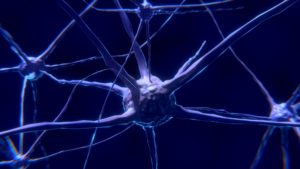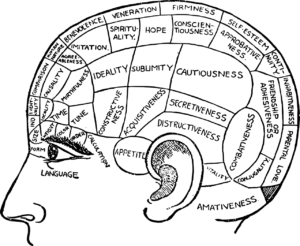- Calls to this hotline are currently being directed to Within Health, Fay or Eating Disorder Solutions
- Representatives are standing by 24/7 to help answer your questions
- All calls are confidential and HIPAA compliant
- There is no obligation or cost to call
- Eating Disorder Hope does not receive any commissions or fees dependent upon which provider you select
- Additional treatment providers are located on our directory or samhsa.gov
Nutritional Status Affects Cortical Folding: Lessons Learned From Anorexia Nervosa

Dr. Mark Gold’s Research You Can Use
Cortical folding in the human brain is complex and variable among individuals. It may also reflect pathological functioning with certain abnormalities associated in some developmental and neuropsychiatric disorders, emerging as an early biomarker in imaging genetics studies.
Anorexia nervosa, a severe eating disorder, is also linked to substantial and rapid variations in the brain structure, and a recent study utilized it as a model disorder to further explore the environmental factors influencing cortical folding.
Understanding cortical folding
In the human brain, cortical folding, or gyrification, refers to the configuration of ridges (gyri) and furrows (sulci) whose morphology varies from individual to individual. This anatomical organization, or folded shape of the human brain, enables a more significant amount of gray matter to be packed into the skull with compromising the white matter connectivity between unconnected regions.
In humans, the folding process takes place during the 16th and 40th gestational weeks and remains relatively constant after one year of age. Any modifications in this quantity are thought to be indicative of genetic influences that play a role in the etiology of neurodevelopmental psychiatric disorders.
Abnormalities in the cortical folding have been linked to severe neurological, cognitive and behavioral disorders, such as epilepsy, autism, and schizophrenia. Regardless of the decades of study and exploration, the understanding of the mechanical forces leading up to the cortical folding remains incomplete.
Two proposed techniques to assess the extent of cortical folding include absolute mean curvature (AMC) and the local gyrification index (IGI). AMC measures the sharpness of sulci and gyri, and IGI measures the ratio between the total area of the cortex and the area visible in a circular region of interest.
 Modern structural magnetic resonance imaging studies indicate considerable decreases of gray matter in severely underweight anorexic patients, which quickly return back to normal following successful weight restoration therapy. However, it still remains unclear as to how these variations are reflected in other aspects of brain morphology.
Modern structural magnetic resonance imaging studies indicate considerable decreases of gray matter in severely underweight anorexic patients, which quickly return back to normal following successful weight restoration therapy. However, it still remains unclear as to how these variations are reflected in other aspects of brain morphology.
Two recent studies assessing cortical folding in underweight anorexia nervosa patients presented apparently contradicting results, which may have been due to the different methods utilized. The study conducted by Schultz et al. found regionally increased AMC, whereas Favaro et al. depicted local reductions of IGI.
Present study
This study investigated the cortical folding in patients at different stages of anorexia nervosa in order to comprehend the extent of influence exerted by the variations in the nutritional status or other related variables.
The researchers computed both vertex wise measure in 87 acutely underweight female anorexia nervosa patients, 58 long term-recovered patients, and 141 healthy control participants. The majority of acutely ill patients were scanned longitudinally again after partial weight normalization.
Results showed a vastly reduced gyrification in acutely ill patients. However, normal values were observed to have been restored in most brain regions after partial weight restoration.
There were no significant differences noticed following a full recovery in comparison to control participants, suggesting evidence that damage to the brain morphology due to anorexia nervosa is reversible if therapy is initiated promptly.
The main prediction of greater gyrification was mostly dependent upon weight restoration alone. These findings suggested a greater sensitivity of cortical folding to environmental influences than commonly understood.
Why is this important?
Collectively, the results indicate that nutritional status influences cortical folding and are suggestive for future gyrification studies to better control for environmental factors. Age of onset of the disease may aggravate such changes, with the earlier onset being the most severe.
These findings also support the likelihood that macroscopic changes in the cortical organization in anorexia nervosa are more reflective of nutritional state than premorbid trait markers or permanent scars.
 Furthermore, these findings question the common practice to use IGI and AMC as biological markers of psychiatric disorder when factors such as weight fluctuations and changes in the nutritional status are frequently occurring in these disorders.
Furthermore, these findings question the common practice to use IGI and AMC as biological markers of psychiatric disorder when factors such as weight fluctuations and changes in the nutritional status are frequently occurring in these disorders.
The authors recommend the inclusion of all such variables in future research. Especially since this study did not account for overweight participants, further investigations assessing associations between nutritional status and cortical folding need to focus on the entire weight spectrum.
These findings hold particular importance as they underline how fluctuations in the nutritional status, that are characteristic of anorexia nervosa, also occur in other neuropsychiatric disorder and/or can be initiated by psychotropic medications.
The rapid normalization of cortical thinning and cortical folding as depicted in the study may help motivate patients to enter intensive therapy as soon as possible.
References:
1. https://royalsocietypublishing.org/doi/full/10.1098/rstb.2017.0321
2. https://www.ncbi.nlm.nih.gov/pmc/articles/PMC2724902/
3. https://www.ncbi.nlm.nih.gov/pubmed/29910027
About the Author:
 Mark S. Gold, M.D. served as Professor, the Donald Dizney Eminent Scholar, Distinguished Professor and Chair of Psychiatry from 1990-2014.
Mark S. Gold, M.D. served as Professor, the Donald Dizney Eminent Scholar, Distinguished Professor and Chair of Psychiatry from 1990-2014.
Dr. Gold was the first Faculty from the College of Medicine to be selected as a University-wide Distinguished Alumni Professor and served as the 17th University of Florida’s Distinguished Alumni Professor.
Learn more about Mark S. Gold, MD
About the Transcript Editor:
 A journalist and social media savvy content writer with extensive research, print and on-air interview skills, Sana Ahmed has previously worked as staff writer for a renowned rehabilitation institute, a content writer for a marketing agency, an editor for a business magazine and been an on-air news broadcaster.
A journalist and social media savvy content writer with extensive research, print and on-air interview skills, Sana Ahmed has previously worked as staff writer for a renowned rehabilitation institute, a content writer for a marketing agency, an editor for a business magazine and been an on-air news broadcaster.
Sana graduated with a Bachelors in Economics and Management from London School of Economics and began a career of research and writing right after. Her recent work has largely been focused upon mental health and addiction recovery.
The opinions and views of our guest contributors are shared to provide a broad perspective on eating disorders. These are not necessarily the views of Eating Disorder Hope, but an effort to offer a discussion of various issues by different concerned individuals.
We at Eating Disorder Hope understand that eating disorders result from a combination of environmental and genetic factors. If you or a loved one are suffering from an eating disorder, please know that there is hope for you, and seek immediate professional help.
Published on January 24, 2019.
Reviewed & Approved on January 24, 2019, by Jacquelyn Ekern MS, LPC
Published on EatingDisorderHope.com

The EatingDisorderHope.com editorial team comprises experienced writers, editors, and medical reviewers specializing in eating disorders, treatment, and mental and behavioral health.

